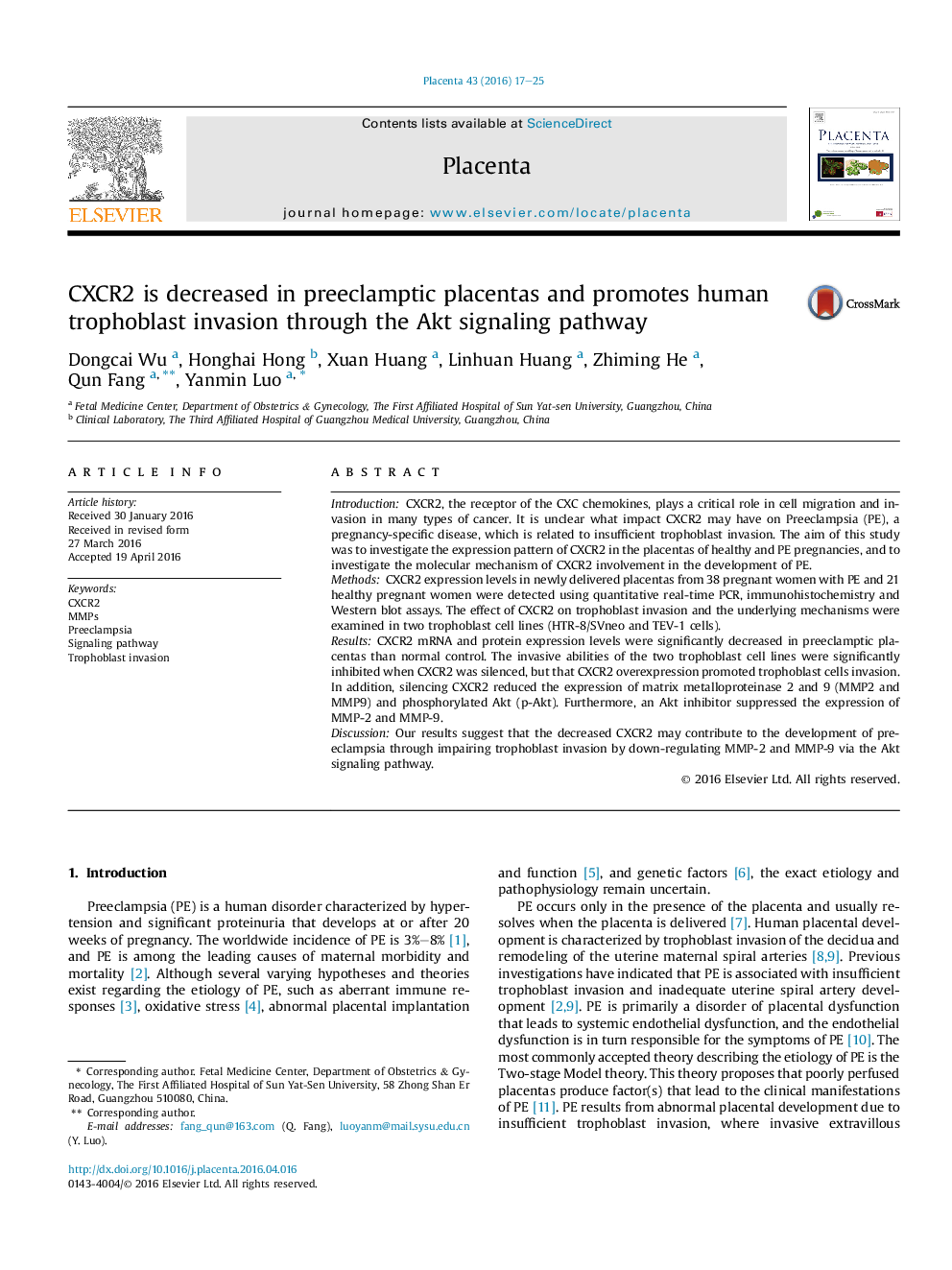| Article ID | Journal | Published Year | Pages | File Type |
|---|---|---|---|---|
| 2788371 | Placenta | 2016 | 9 Pages |
•CXCR2 expression is down-regulated in preeclamptic placentas.•CXCR2 promoted trophoblast invasion by activating MMP-2 and MMP-9 through the Akt signaling pathway.•CXCR2 may contribute to placentation and preeclampsia development.
IntroductionCXCR2, the receptor of the CXC chemokines, plays a critical role in cell migration and invasion in many types of cancer. It is unclear what impact CXCR2 may have on Preeclampsia (PE), a pregnancy-specific disease, which is related to insufficient trophoblast invasion. The aim of this study was to investigate the expression pattern of CXCR2 in the placentas of healthy and PE pregnancies, and to investigate the molecular mechanism of CXCR2 involvement in the development of PE.MethodsCXCR2 expression levels in newly delivered placentas from 38 pregnant women with PE and 21 healthy pregnant women were detected using quantitative real-time PCR, immunohistochemistry and Western blot assays. The effect of CXCR2 on trophoblast invasion and the underlying mechanisms were examined in two trophoblast cell lines (HTR-8/SVneo and TEV-1 cells).ResultsCXCR2 mRNA and protein expression levels were significantly decreased in preeclamptic placentas than normal control. The invasive abilities of the two trophoblast cell lines were significantly inhibited when CXCR2 was silenced, but that CXCR2 overexpression promoted trophoblast cells invasion. In addition, silencing CXCR2 reduced the expression of matrix metalloproteinase 2 and 9 (MMP2 and MMP9) and phosphorylated Akt (p-Akt). Furthermore, an Akt inhibitor suppressed the expression of MMP-2 and MMP-9.DiscussionOur results suggest that the decreased CXCR2 may contribute to the development of preeclampsia through impairing trophoblast invasion by down-regulating MMP-2 and MMP-9 via the Akt signaling pathway.
